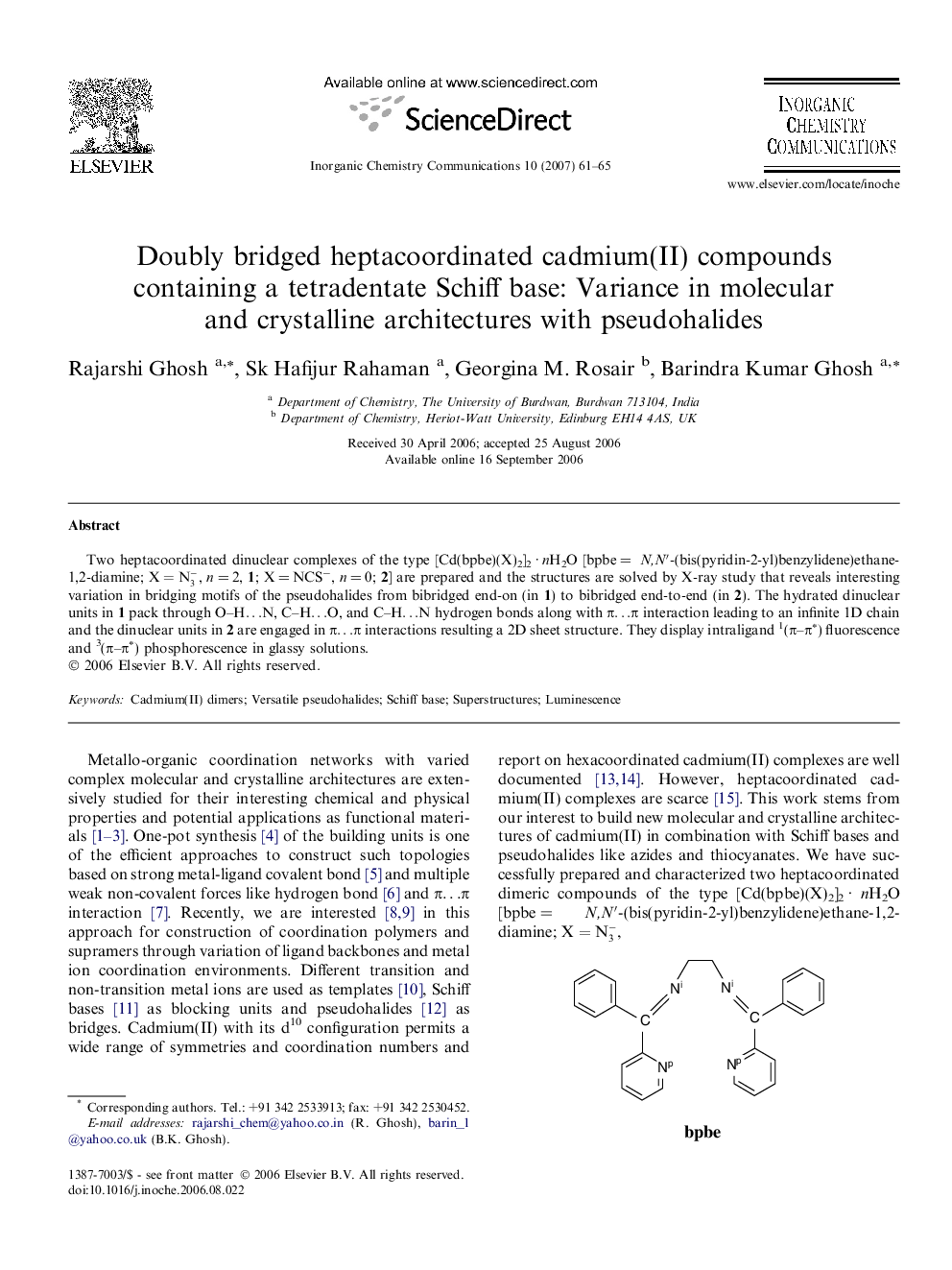| Article ID | Journal | Published Year | Pages | File Type |
|---|---|---|---|---|
| 1303485 | Inorganic Chemistry Communications | 2007 | 5 Pages |
Two heptacoordinated dinuclear complexes of the type [Cd(bpbe)(X)2]2 · nH2O [bpbe = N,N ′-(bis(pyridin-2-yl)benzylidene)ethane-1,2-diamine; X=N3-, n = 2, 1; X = NCS−, n = 0; 2] are prepared and the structures are solved by X-ray study that reveals interesting variation in bridging motifs of the pseudohalides from bibridged end-on (in 1) to bibridged end-to-end (in 2). The hydrated dinuclear units in 1 pack through O–H…N, C–H…O, and C–H…N hydrogen bonds along with π…π interaction leading to an infinite 1D chain and the dinuclear units in 2 are engaged in π…π interactions resulting a 2D sheet structure. They display intraligand 1(π–π∗) fluorescence and 3(π–π∗) phosphorescence in glassy solutions.
Graphical abstractTwo heptacoordinated dinuclear cadmium(II)pseudohalide complexes of type [Cd(bpbe)(X)2]2 · nH2O bpbe = N,N ′-(bis(pyridin-2-yl)benzylidene)ethane-1,2-diamine; X=N3-, n = 2, 1; X = NCS−, n = 0; 2] have been synthesized and characterized by X-ray diffraction measurements. The bridging mode of azide is end-on and thiocyanato bridges are in end-to-end fashion. Ligand bpbe exhibits green fluorescence at room temperature whereas its azido and thiocyanato compounds have a hypsochromic shift in blue wavelength region.Figure optionsDownload full-size imageDownload as PowerPoint slide
